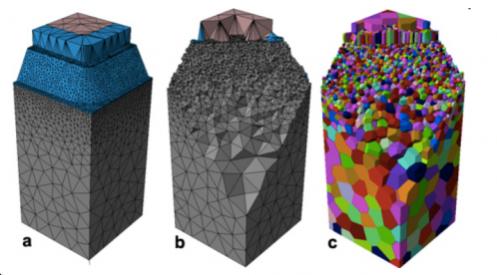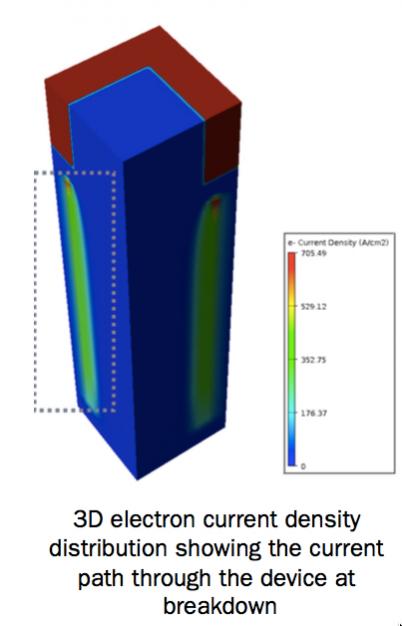Most of what is talked about on SemiWiki is silicon design. After all for regular SoCs it is the only game in town. But for high voltage power applications (think automotive for one big market) there are other more esoteric technologies becoming more attractive.
Silicon has been the material of choice for high-voltage power applications for a long time. Recently silicon-carbide (SiC) and gallium-nitride (GaN) have started to gain attention. Their wide bandgap means that they should have better performance than silicon. But that wide bandgap also leads to some challenges in modeling due to the accuracy required.

The foundation of designing power devices is TCAD. This “virtual manufacturing” is clearly much faster and cheaper than actually running wafers and the accuracy is really only limited by the mesh size used in the TCAD algorithms: a coarse mesh gives answers fast with some inaccuracy, a fine mesh gives very accurate answers at the cost of increased runtime.
TCAD on its own would be of limited interest if it could not be linked to the design world. The engineers who design the process for power applications are not the same engineers as design the devices themselves. What is required is a link from TCAD to SPICE so that circuit performance can be measured without having to process real wafers, which is both expensive and slow.
Once SPICE models exist then design can proceed much like any analog design, with layout being created, parasitics extracted and then simulations run to determine the performance. Lather, rinse and repeat.
Another key step is reliability analysis. The high voltages involved make electromigration and thermal issues in particular more critical.
Silvaco has a complete suite of tools from TCAD, up through modeling, to get to a PDK. Then a complete suite of tools for design and analysis, including the technologies recently acquired through the Invarian merger.
Two webinars (one in Japanese) go into more details of the Silvaco solution for the design, modeling and simulation of power devices.
 The first, by Eric Guichard, is titled TCAD to SPICE Simulation of SiC and Si Power Devices:
The first, by Eric Guichard, is titled TCAD to SPICE Simulation of SiC and Si Power Devices:
- Key challenges of power device TCAD simulation
- Size of structure, high aspect ratio and devices that are intrinsically 3D
- Lattice heating and high breakdown voltage
- Key challenges of SiC TCAD simulation
- Wide bandgap
- Anisotropic physical models and SiC specific models
- TCAD simulation examples
- When to use 3D over 2D: 2D is much faster simulation time but it is an inherently artificial device, although 2D can often be used as a pseudo-3D simulation before switching to 3D for accuracy
- GBT, Trench MOS, DMOS, IEMOSFET
- Full TCAD to SPICE IGBT flow example
- Process and Device simulations for IV curve generation
- TCAD-based SPICE parameter extraction using HiSIM-IGBT compact model
- Correlation between circuit performance and process variation
The second webinar, presented by Yoshihisa Iino of Silvaco Japan presented a webinar on High-voltage Power Device Modeling using HiSIM_HV2 (the name HiSim comes from University of Hiroshima). The webinar is presented in Japanese.
The webinar provides a comprehensive overview of model parameter extraction for high voltage devices, using the industry standard HiSIM_HV2 model. Model parameter effects of HiSIM_HV2 are explained first, followed by a step-by-step description of model parameter extraction using Utmost IV. Finally, depletion mode, which is implemented in the latest version of HiSIM_HV is introduced.
To access a replay of the webinars, go to the Silvaco webinar page here.
Share this post via:

![SILVACO 051525 Webinar 400x400 v2[62]](https://semiwiki.com/wp-content/uploads/2025/04/SILVACO_051525_Webinar_400x400_v262.jpg)





Comments
0 Replies to “High-Voltage Power Design”
You must register or log in to view/post comments.